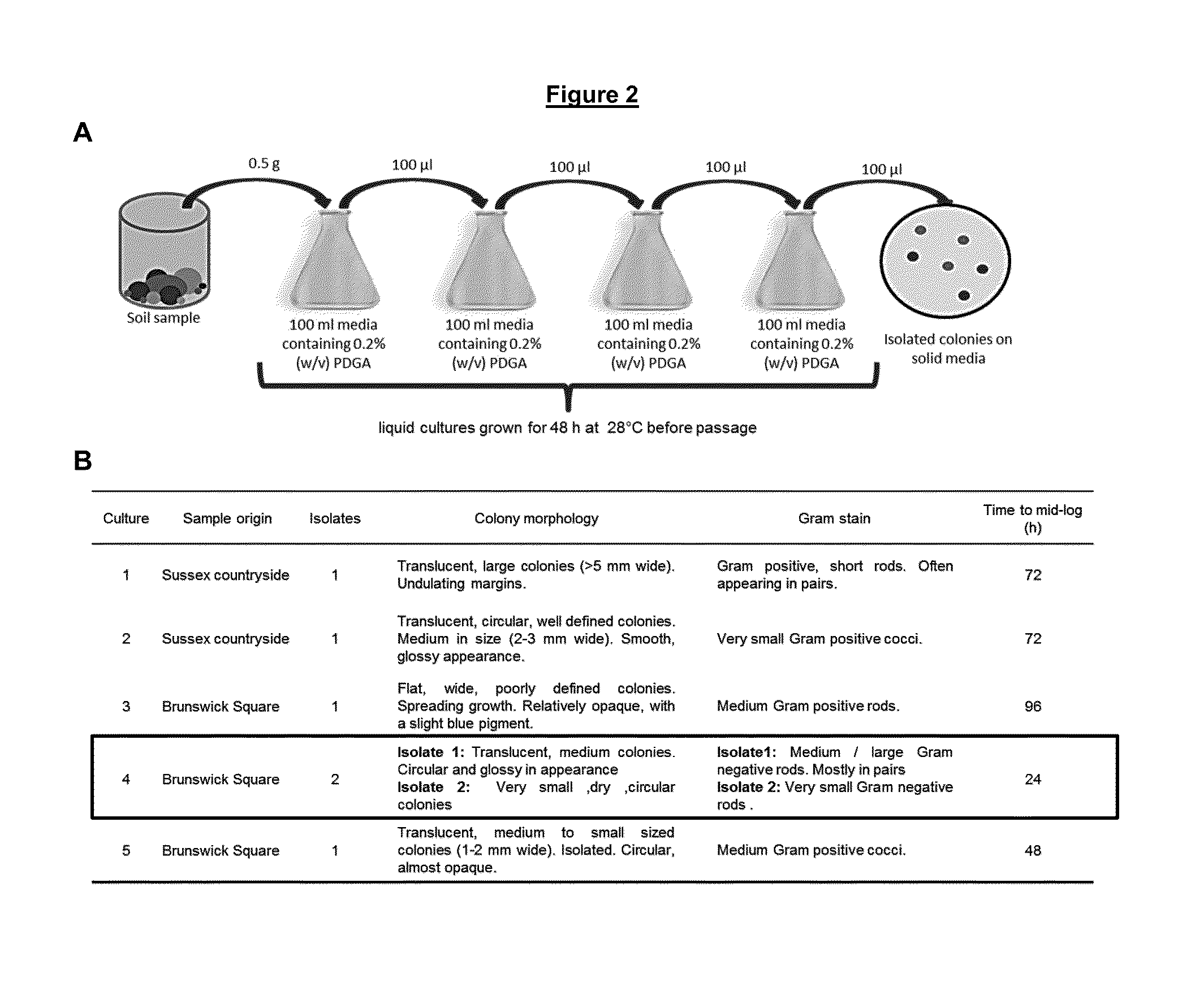Enzyme and uses thereof
a technology of enzymes and enzymes, applied in the field of newly characterised enzymes, can solve the problems of inability to identify enzymes from gel spots, inability to identify enzymes by lc/ms-ms, etc., and achieve the effect of accelerating the treatment of infection and potentiating the bactericidal activity
- Summary
- Abstract
- Description
- Claims
- Application Information
AI Technical Summary
Benefits of technology
Problems solved by technology
Method used
Image
Examples
example 1
Analysis of CapD
[0153]CapD is a γ-glutamyltranspeptidase with the primary function of attachment of PDGA to peptidoglycan; it has also been shown to function as a PDGA depolymerase.14 CapD is activated following auto-cleavage and the two subunits must remain in close association and bound to the bacterial envelope in order to display enzymatic activity. The capacity of the enzyme to degrade PDGA relies, not on a classical protease mechanism, but on transfer of a γ-glutamyl moiety from PDGA to a nucleophile acceptor such as an amino acid, a peptide or a free amino function by a non-sequential “ping-pong” mechanism. We and others14,15 have noted that, whilst recombinant CapD rapidly removes the PDGA capsule from B. anthracis, it is markedly unstable; this is likely to be a reflection of its mode of enzymatic action and stringent requirements for activity. CapD did afford some protection to mice infected with B. anthracis by the intraperitoneal route16 but attempts to engineer pharmace...
example 2
PDGA Depolymerases from Phages
[0159]The presence of a capsule impedes bacteriophage access to the bacterial surface and for this reason the large majority of phages that infect capsule-bearing hosts carry capsule depolymerases that facilitate interaction with the cell surface that underlies the capsular layer.18
[0160]To identify putative phage-encoded PDGA depolymerases, we examined the lytic properties of a range of anthrax phages, including γ, IM, Fah and six recently isolated bacteriophages from the Polish Military Research Centre at Pulawy against a panel of encapsulated and capsule-free B. anthracis phenotypes.19
[0161]More specifically, seven B. anthracis phage (Gamma, IM, Fah, F3, F7, F9, F12) were examined for capacity to degrade high molecular weight PDGA. Of particular interest was gamma phage, which has been reported to infect encapsulated phenotypes of B. anthracis and to do so it would probably possess a capsule depolymerase.
[0162]In order to determine degradation of P...
example 3
PDGA Depolymerases from Soil Bacteria
[0163]To facilitate survival under carbon limiting conditions, many soil bacteria degrade and metabolise a range of diverse carbon-containing compounds as sources of energy. The initial step in the degradation of carbonaceous compounds is most frequently the production of bacterial hydrolytic enzymes which degrade recalcitrant molecules into metabolisable fragments; soil enrichment culture techniques have been used to identify enzymes that degrade pneumococcal capsular polysaccharides,20 indicating the potential of this approach.
[0164]We sampled a variety of soils in Southern England using minimal salts medium containing 0.2% PDGA and isolated a panel of microorganisms able to utilize the polymer as sole source of carbon. Standard soil enrichment techniques were employed to isolate such bacteria, as shown in FIG. 2A.
[0165]A number of distinct environmental isolates were found to metabolize PDGA, shown in FIG. 2B. Isolate 4 was chosen as it was fa...
PUM
| Property | Measurement | Unit |
|---|---|---|
| temperature | aaaaa | aaaaa |
| temperature | aaaaa | aaaaa |
| pH | aaaaa | aaaaa |
Abstract
Description
Claims
Application Information
 Login to View More
Login to View More - R&D
- Intellectual Property
- Life Sciences
- Materials
- Tech Scout
- Unparalleled Data Quality
- Higher Quality Content
- 60% Fewer Hallucinations
Browse by: Latest US Patents, China's latest patents, Technical Efficacy Thesaurus, Application Domain, Technology Topic, Popular Technical Reports.
© 2025 PatSnap. All rights reserved.Legal|Privacy policy|Modern Slavery Act Transparency Statement|Sitemap|About US| Contact US: help@patsnap.com



